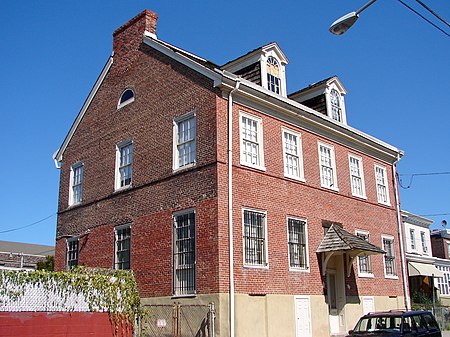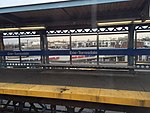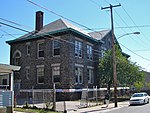John Ruan House

The John Ruan House is a historic mansion in the Frankford neighborhood of Philadelphia, Pennsylvania. It was built in 1796 as the home of Dr. John Ruan (June 9, 1771, St. Croix, West Indies – July 2, 1845, Bristol, Pennsylvania), a physician and community leader. The 2½-story house, the oldest of its size and stature still standing in Frankford, was listed on the National Register of Historic Places in 1985. It was added to the Philadelphia Register of Historic Places on January 3, 1985.It has been continuously occupied since its erection and is now the home of the Grand Army of the Republic Civil War Museum and Library. The museum houses Civil War and Grand Army of the Republic artifacts, books, and memorabilia, and is open Sundays from 12 to 5 p.m. and Tuesdays from 12 noon to 4 p.m.. Other days are by appointment.
Excerpt from the Wikipedia article John Ruan House (License: CC BY-SA 3.0, Authors, Images).John Ruan House
Womrath Street, Philadelphia
Geographical coordinates (GPS) Address Nearby Places Show on map
Geographical coordinates (GPS)
| Latitude | Longitude |
|---|---|
| N 40.01 ° | E -75.091111111111 ° |
Address
Womrath Street 1525
19124 Philadelphia
Pennsylvania, United States
Open on Google Maps






